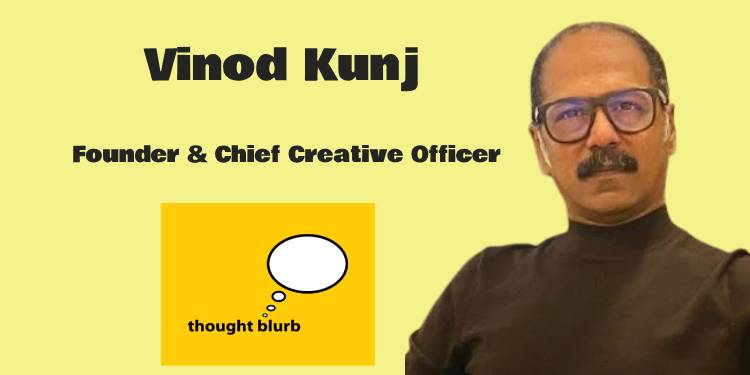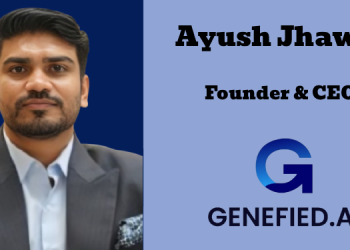Thought Blurb Communications, an independent advertising and design agency based in Mumbai, was founded in 2007 by Vinod and Razia Kunj. The agency provides a comprehensive approach to brand strategy, identity design, packaging, marketing, and advertising, focusing on design and digitalization.
With a strong presence in Kochi, Thought Blurb serves clients across various sectors, including IBS Software and AVT Teas, and currently manages several Parle Products brands like Parle-G and KrackJack, along with established names like Reliance Digital.
Recently, their Teacher’s Day ad for Parle-G went viral, achieving a view-through rate (VTR) of 70%. Launched on August 30, the nearly four-minute film spread organically via WhatsApp, amplified by educational institutions and teacher groups, reaching an estimated 15 crore viewers among middle and upper-middle-class communities. Founder Vinod Kunj highlights the ad’s emotional impact, resonating deeply with students and teachers alike.
MediaNews4u.com caught up with Vinod Kunj, the founder and Chief Creative Officer of Thought Blurb Communications:
Q. Parle has evolved the ‘G’ from a high intelligence quotient (IQ) to now emphasis on emotional quotient (EQ). How has that translated into marketing activities and the marketing focus?
From an advertising standpoint, this evolution has broadened the scope of overall brand communication. From a single-dimensional perspective of genius, it has become a larger thought, building a deeper connection with the customer at an emotional level. The communication can now be impassioned, heartfelt and personal for different sections of the population.
Q. Has the message of empathy now become important in brand communication?
Empathy has always been an important tool for advertisers. It goes back to the oldest gospels of advertising, as far back as Ogilvy’s books. Good advertising has always had an undercurrent of empathy, whether it is used to make people laugh, or paint oneself as the underdog. It is not always tugging at heartstrings in an overt way. I remember Neil French in a talk in India, where he said, “You guys can sell anything, even mosquito-repellent, with sentimentality.” And I guess we do.

Q. For Teacher’s Day what kind of brainstorming went on to ensure that it stood out from the other brand campaigns done around Teacher’s Day?
Like all brainstorming sessions, it began with the obvious solutions. Salutations to teachers, laudable sentiments about teachers in general, and the like. The smart money is always on weeding out the obvious and digging for gold. The point was to find the human connection. Teachers are not just about teaching. It’s about personal relationships with students and long lasting memories of your favourite teachers. Putting ourselves in the shoes of these teachers, we can read their emotions as well. The term ‘alma mater’ becomes a lot more than a cold Latin phrase. That was where the idea took root and grew.
Q. To hold a distracted viewer’s attention for the ad which ran for three to four minutes what worked in its favour?
As advertising folk, we do consider a four-minute film as long-format. Taking a page from short to feature length directors becomes paramount. Even in a short film, we followed a multi-act format with a build-up, an unspoken passage where the emotion builds simply through cinematic description. The denouement brings all the pieces of the puzzle that the audience has been guessing about through the film. It’s not so much holding the attention of the audience as compelling them to watch it over and over. If we can get the audience to do that, and still get a surprise at the end of it, we consider the job done.
Q. Could you shed light on the challenge of targeting children with ads?
The beauty of this is that we don’t really have to target children at all. What we need to attract is the child in every adult who has ever been to school. There is something we never lose when we leave. Think of the feeling of camaraderie, lost romances, lifelong friendships that make up memories of our school days.
Also, children do not stay children for long. Instead of attaching ourselves to the here and now, with Parle-G we try to create a brand message that is eternal. With the Internet, the message will be online as long as it is popular. Even in 20 years, we expect the film will make sense to the next generation and the next.
Q. What role did Educational institutions play in amplifying the reach, with retired teacher groups, principal associations, and education ministry groups sharing it across all institutions and WhatsApp groups?
I think the film has received a global reach. We know that the film has been forwarded around the world. A lot of people have sent them to individual teachers, teachers’ groups, retired or serving. Within the teaching community, it has been well-received and many thanks have been received on various platforms. Knowing that a favourite teacher loves the film and accepts it as a tribute is a great way to spur acceptance and propagation of the films.
Most individuals don’t think in terms of groups and abstract communities. They respond to this film at a personal level, and I suspect that one-to-one communication is the main reason for its popularity.
Q. As we head into the festive season what innovations can we expect from Parle G to ensure that it gets its share of voice?
Festival season is always a time of immense clutter and media noise. The idea is to cut through the clutter with an idea that resonates at a human level. It can be done, and we have seen some excellent examples right here in India. Internationally, despite a lot more media clamour, the John Lewis Christmas ads are always, always remembered for years. That is the gold standard that we want to reach. We would like to be discussed by people who say, “Remember the Parle-G Diwali ad from 2024? No, not that one. That was the other year.” That is how a brand grows into the substrate of a nation.

Q. Beyond Parle G what marketing tactics will Thought Blurb Communication do for other clients?
We take a holistic view to advertising with all our clients. The mistake is to approach each brief as a single project. If it doesn’t build the brand another storey in its history, it doesn’t run. It’s important to treat every client and every brand as a long-term prospect, so that we become brand wardens and not just a convenient supplier.
Every brand has its own challenges and opportunities. We have a consummate team with decades of experience, so we can approach them individually, with the clarity of thought that comes with the understanding that one size does not fit all.
Q. What are the learnings from Parle G that the agency will take going forward?
We are working with a brand that is practically a lynchpin of Indian society. There is always the worry that we will veer from the stated path. Cleaving the past of the brand to the present and the future is constant in the back of our minds. A fresh new brand that we take to market is not very different from this. Parle-G is an object lesson in brand-building, and we take the learnings from its past very seriously.
Q. Parle G’s campaign, the agency said, reached countries like the UK, US, Malaysia, Singapore, and the Middle East. Is that part of the aim for other clients’ campaigns as well or is this the icing on the cake?
Parle-G is sold all over the world. With the amorphous nature of digital advertising, there are no borders between continents. We expected the campaign to spread out far and wide, but the scale of it did surprise and delight us all. And here is another learning that we take to heart. If the sentiment expressed is universal, it will have global appeal, and it will spread. We hope to run our ideas through those filters in the future to get the best scripts among the ones we generate.
Q. Is the mandatory online self-declaration certificate for food products overdue?
This is again a contentious subject that we have to work with clients to enforce. And it is not just for food. It’s all very well to have influencers and social media stars promoting products, but as professional advertising personnel, we carry the responsibility to represent our brands in the most mature light as possible. It’s true that products have been misrepresented before, and I fear that they may be again. There will be those who are less than scrupulous but it helps no one. Short-term business goals are never an excuse for shoddy scrutiny.
This does not just apply to the advertising community. It applies to the entire media industry.

Q. How are the agency and Parle G ensuring compliance?
We are fortunate to be working with a respected client who makes excellent products that are trusted and almost revered around the world. And we know that certification and compliance is at a high echelon of priority with them. Ensuring that the communication is sensitive and inclusive is our job. And that is where the vetting process comes in.
It does not help to be insular about this process. Just because it produces a laugh or an adverse sentiment that makes us grin, it is not the criterion for great advertising. Diligent examination of every message is crucial. It helps to have a pool of professionals with exposure to global media to know the minefields we need to avoid.

















